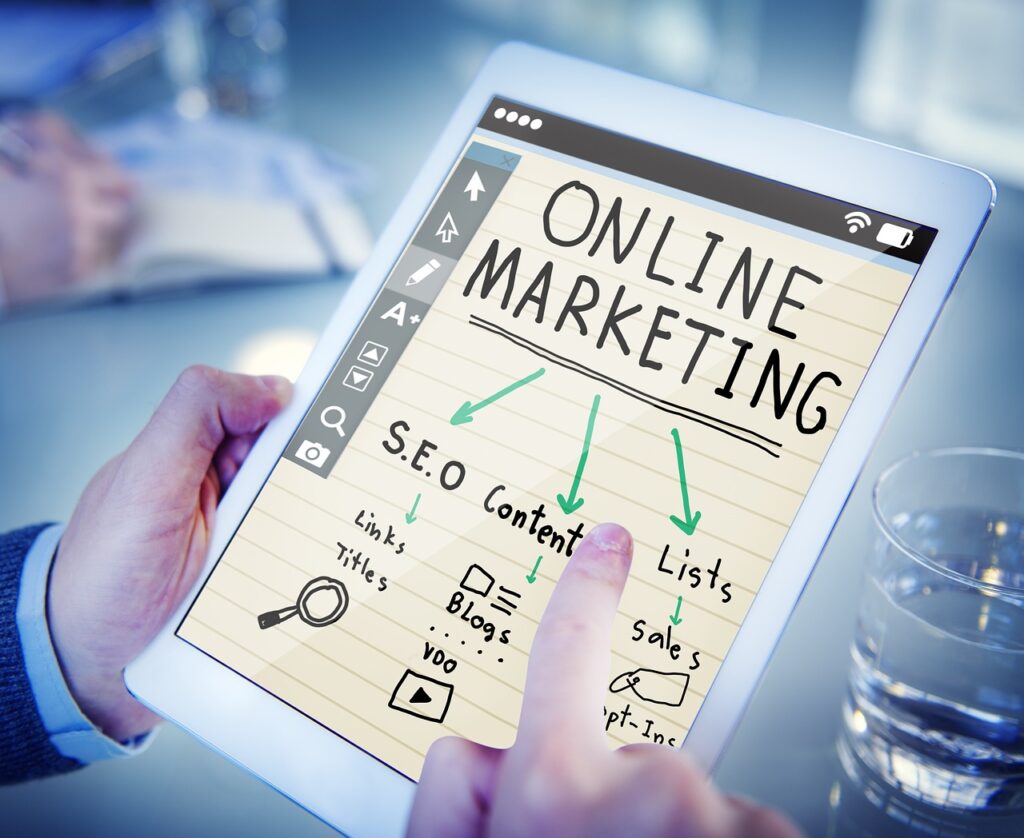The Advantages of Programmatic Advertising in Digital Marketing
Real-Time Targeting and Optimization
Programmatic advertising offers the ability to target and optimize campaigns in real-time, a significant advantage over traditional advertising methods. By leveraging data and algorithms, programmatic platforms can instantly analyze user behavior, demographics, and contextual information to deliver the most relevant ads to the right audience at the right moment. This real-time optimization ensures that ad spend is efficiently directed towards the most promising leads, maximizing the return on investment (ROI) for advertisers.
Increased Efficiency and Cost-Effectiveness
Programmatic advertising streamlines the ad buying process, reducing the manual effort and overhead associated with traditional media planning and purchasing. The automated nature of programmatic platforms eliminates the need for lengthy negotiations, complex insertion orders, and manual ad placements. This increased efficiency translates into significant cost savings for advertisers, allowing them to allocate more of their budget towards effective ad placements rather than administrative tasks.
Improved Audience Targeting
One of the primary advantages of programmatic advertising is the ability to target specific audience segments with precision. By leveraging data from various sources, including user behavior, demographics, and contextual information, programmatic platforms can identify and reach the most relevant consumers for an advertiser’s products or services. This level of targeted audience selection ensures that the ads are displayed to individuals who are more likely to engage with the content, leading to higher conversion rates and a better return on investment.
Enhanced Personalization and Relevance
Programmatic advertising enables the delivery of highly personalized ad experiences to consumers. By analyzing individual user data and preferences, programmatic platforms can serve tailored ad content that resonates with the target audience. This personalization not only enhances the user experience but also increases the likelihood of engagement and conversion, as consumers are more likely to respond positively to ads that align with their interests and needs.
Scalability and Flexibility
Programmatic advertising platforms offer unparalleled scalability, allowing advertisers to quickly and easily expand their reach across multiple channels and devices. The automated nature of programmatic buying enables advertisers to easily scale their campaigns up or down based on performance, market trends, and business objectives. This flexibility ensures that advertisers can adapt their strategies in real-time, maximizing the impact and efficiency of their digital marketing efforts.
Improved Measurement and Transparency
Programmatic advertising provides advertisers with unprecedented visibility into the performance of their campaigns. Programmatic platforms offer detailed metrics and analytics, allowing advertisers to track key performance indicators (KPIs) such as impressions, clicks, conversions, and return on ad spend (ROAS). This level of transparency enables advertisers to make data-driven decisions, continually optimize their campaigns, and demonstrate the effectiveness of their digital marketing investments.
Competitive Advantages
By embracing programmatic advertising, marketers can gain a significant competitive edge in the digital landscape. The advanced targeting capabilities, real-time optimization, and data-driven insights provided by programmatic platforms allow advertisers to outperform their competitors and reach their target audience more effectively. As programmatic adoption continues to grow, businesses that capitalize on this technology will be better positioned to achieve their marketing objectives and stay ahead of the competition.
The advantages of programmatic advertising in digital marketing are numerous and compelling. From real-time targeting and optimization to improved efficiency, audience targeting, personalization, and measurement, programmatic platforms offer a powerful set of tools that can significantly enhance the effectiveness and ROI of digital marketing campaigns. As the digital landscape continues to evolve, embracing programmatic advertising will become an increasingly critical component of a successful digital marketing strategy.
Leveraging Programmatic Advertising for Effective Campaign Optimization
The Rise of Programmatic Advertising
In the dynamic world of digital marketing, the emergence of programmatic advertising has revolutionized the way businesses approach their advertising campaigns. Programmatic advertising utilizes advanced algorithms and real-time data analysis to automate the process of buying and selling digital ad inventory, enabling marketers to precisely target their desired audience and optimize their campaigns for maximum impact.
Personalized Targeting and Audience Engagement
One of the key advantages of programmatic advertising is its ability to deliver highly personalized and targeted ads to the right audience. By leveraging vast data sets and sophisticated algorithms, programmatic platforms can analyze user behavior, demographics, and interests to identify the most relevant consumers for a particular product or service. This level of precision allows marketers to create tailored advertising experiences that resonate with their target audience, leading to increased engagement, higher click-through rates, and ultimately, better return on investment (ROI).
Real-Time Campaign Optimization
The real-time nature of programmatic advertising is another significant benefit. Marketers can continuously monitor the performance of their campaigns and make data-driven adjustments in real-time to optimize their ad placements, messaging, and targeting. This agility allows them to adapt quickly to changing market conditions, consumer preferences, and emerging trends, ensuring that their advertising efforts remain effective and aligned with their overall marketing strategy.
Dynamic Bidding and Ad Serving
Programmatic platforms utilize automated bidding algorithms that enable advertisers to bid on ad impressions in real-time, ensuring that their ads are displayed to the most valuable and engaged users. This dynamic bidding process, coupled with intelligent ad serving, maximizes the efficiency of ad spend by allocating budgets to the most effective placements and targeting strategies.
Comprehensive Performance Tracking
Programmatic advertising platforms provide marketers with detailed performance metrics and analytics, allowing them to track the success of their campaigns across multiple channels and devices. From click-through rates and conversion metrics to audience insights and attribution modeling, these data-driven insights empower marketers to make informed decisions, optimize their campaigns, and demonstrate the tangible value of their advertising efforts to key stakeholders.
Cost Efficiency and Scalability
Compared to traditional advertising methods, programmatic advertising offers a more cost-effective approach. By automating the ad buying and placement process, programmatic platforms can help businesses reduce operational costs and maximize their advertising budgets. Additionally, the scalability of programmatic advertising allows businesses, regardless of size, to reach a wider audience and optimize their campaigns based on real-time data and performance metrics.
Leveraging Cross-Channel Synergies
Programmatic advertising excels in its ability to seamlessly integrate with various digital marketing channels, enabling businesses to create a cohesive and cross-channel advertising strategy. By synchronizing efforts across platforms such as display, video, social media, and mobile, marketers can deliver a consistent brand experience and enhance the overall effectiveness of their digital marketing campaigns.
Embracing the Future of Digital Advertising
As the digital landscape continues to evolve, the role of programmatic advertising in digital marketing strategies will only become more significant. By leveraging the power of data-driven insights, real-time optimization, and cross-channel integration, businesses can stay ahead of the curve and deliver highly personalized and effective advertising experiences to their target audience. The future of digital marketing lies in the strategic integration of programmatic advertising, empowering marketers to make informed decisions, optimize their campaigns, and drive tangible business results.
Conclusion
Programmatic advertising has become a game-changer in the digital marketing landscape, offering a multitude of advantages that savvy marketers are eager to leverage. By harnessing the power of data-driven automation, businesses can streamline their advertising processes, enhance campaign optimization, and ultimately drive greater returns on their marketing investments.
One of the primary benefits of programmatic advertising is its ability to hyper-target audiences with laser-like precision. Through the use of real-time data and advanced algorithms, marketers can identify and reach their most valuable customers, delivering personalized content and offers that resonate with their specific needs and interests. This level of targeted precision not only improves the effectiveness of ad campaigns but also enhances the overall user experience, fostering stronger brand loyalty and engagement.
Moreover, programmatic advertising enables seamless campaign optimization, allowing marketers to continuously fine-tune their strategies based on real-time performance data. By closely monitoring key metrics such as impressions, clicks, and conversions, businesses can quickly identify and capitalize on the most successful ad placements, messaging, and targeting strategies, while promptly addressing any underperforming elements. This agility and responsiveness are crucial in today’s fast-paced digital landscape, where the ability to adapt and pivot is essential for maintaining a competitive edge.
Beyond the advantages of precision targeting and optimization, programmatic advertising also offers unparalleled efficiency and cost-effectiveness. By automating the ad buying and placement process, marketers can streamline their workflows, reduce manual labor, and minimize the risk of human error. This, in turn, frees up valuable resources that can be reinvested into other critical aspects of the marketing strategy, ultimately driving a more favorable return on investment.
As the digital advertising landscape continues to evolve, the adoption of programmatic technologies will become increasingly essential for marketers seeking to stay ahead of the curve. By embracing the power of data-driven advertising and leveraging the benefits of programmatic platforms, businesses can unlock new levels of performance, enhance their customer engagement, and ultimately achieve their marketing goals with greater efficiency and effectiveness.



